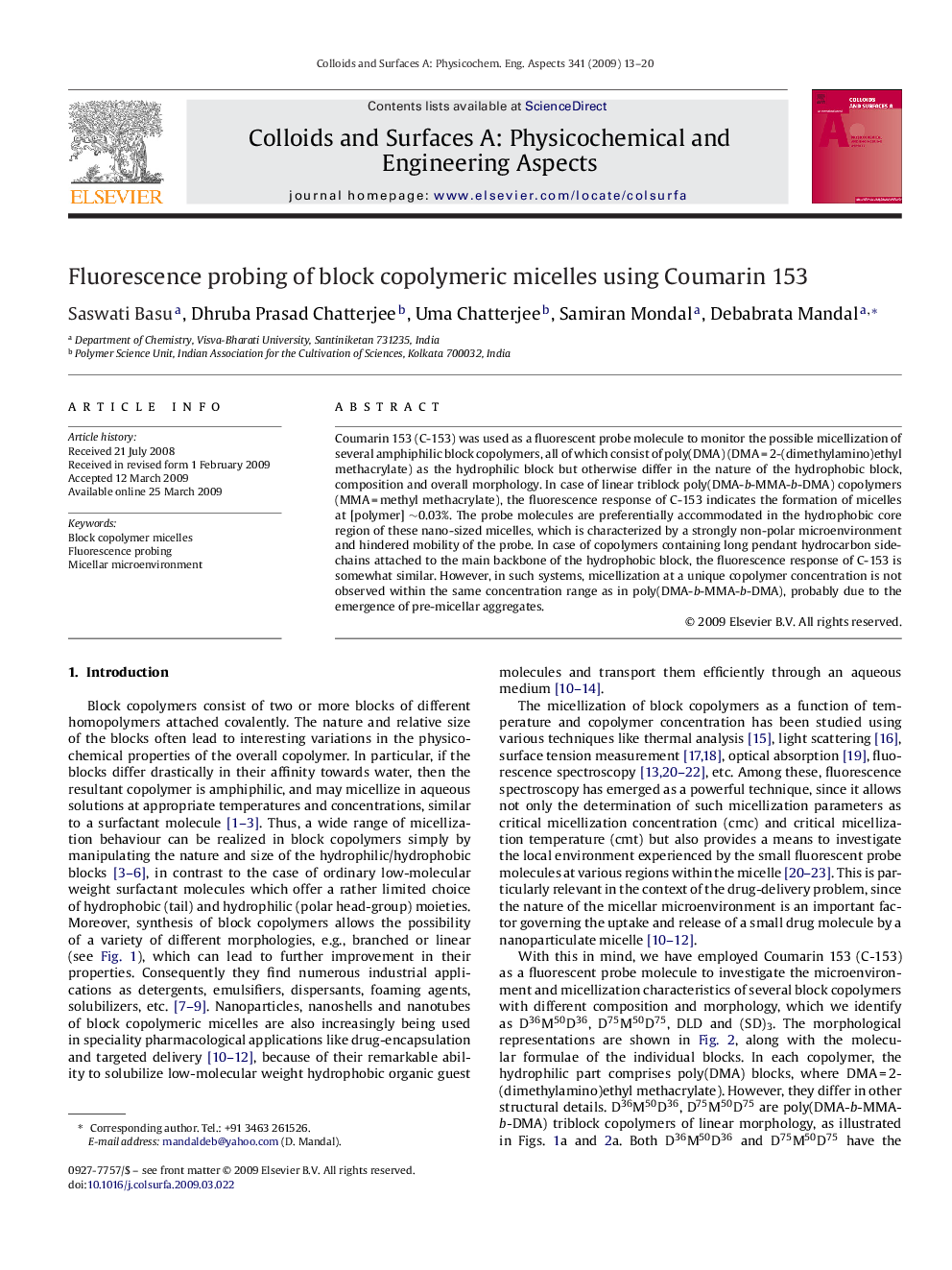| کد مقاله | کد نشریه | سال انتشار | مقاله انگلیسی | نسخه تمام متن |
|---|---|---|---|---|
| 595975 | 1454031 | 2009 | 8 صفحه PDF | دانلود رایگان |

Coumarin 153 (C-153) was used as a fluorescent probe molecule to monitor the possible micellization of several amphiphilic block copolymers, all of which consist of poly(DMA) (DMA = 2-(dimethylamino)ethyl methacrylate) as the hydrophilic block but otherwise differ in the nature of the hydrophobic block, composition and overall morphology. In case of linear triblock poly(DMA-b-MMA-b-DMA) copolymers (MMA = methyl methacrylate), the fluorescence response of C-153 indicates the formation of micelles at [polymer] ∼0.03%. The probe molecules are preferentially accommodated in the hydrophobic core region of these nano-sized micelles, which is characterized by a strongly non-polar microenvironment and hindered mobility of the probe. In case of copolymers containing long pendant hydrocarbon side-chains attached to the main backbone of the hydrophobic block, the fluorescence response of C-153 is somewhat similar. However, in such systems, micellization at a unique copolymer concentration is not observed within the same concentration range as in poly(DMA-b-MMA-b-DMA), probably due to the emergence of pre-micellar aggregates.
Journal: Colloids and Surfaces A: Physicochemical and Engineering Aspects - Volume 341, Issues 1–3, 5 June 2009, Pages 13–20